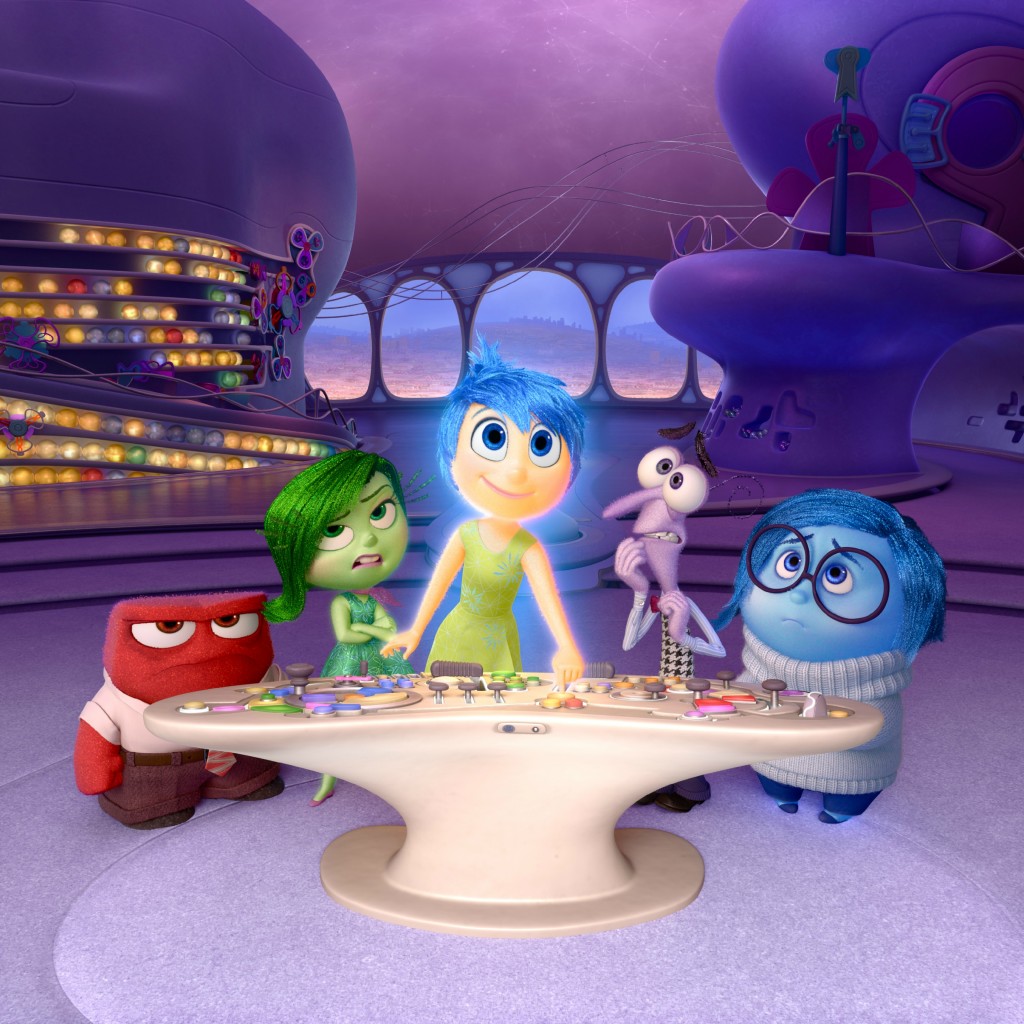Inside the Mind of #InsideOutEvent
with Ralph Eggleston
“Lights, camera, action” …. Have you ever thought about what that means in animation? Honestly, I never did. I always just sit back and enjoy the movie. Recently though I had the chance to sit down with Production Designer, Ralph Eggleston, to discover what it took to create the look of the world and characters inside Riley’s mind in Inside Out.
In a live action film you have a set where the action takes places. In an animated film you have to create that set from scratch. You have to design everything. While that’s really cool, it’s also a lot of work. They design everything you see on the screen.
He walked us through the color script and explained that it was the most detailed one he had ever done. They basically had to create two films at the same time – the real world and the mind world.
I never thought about it as I sat and screened the movie the night before, but I always knew when they were in the mind and when they were in the real world. Beyond that I could even tell within the real world when they were in Minnesota and when they were in San Francisco.
So how did they conquer the big challenge of the real world vs the mind world? How does the audience know where you are at any given moment? The biggest difference between the mind world and the real world on a basic sense is the real world is very textural. There are a lot of hard surfaces that reflect light, there’s high key – low contrast , and not a lot of darks (no shadows). The mind world on the other hand is as far to the other side of the spectrum as it can get. There is a lot of saturation, high contrast, and a lot of translucent surfaces. It’s very clear where you are (mind vs real world).
There’s also some minor differences in the real world to differeniate from Minnesota and San Francisco. Minnesota has high key low contrast and a lot of pastels. San Francisco is very high key low contrast, but pulled back. It’s warmer.
To add to all of it, if they change something in the story of the real world it also affects the mind world and vise versa.
Originally the film just focused on the mind characters, but you couldn’t care about the emotions of this little girl unless you cared about the little girl. Through out the course of the film her story kind of grew and it became paramount to aiding to help the audience really care about the emotions going on.
As I watched the movie the lighting and coloring made me feel emotions. Eggleston explained that audiences respond to sight first, then sound, then the story.
I had a so much fun learning about what goes on behind the scenes. Another one of my favorite things we chatted about was the fact that he felt that every film he did was like a 4 yr graduate course on that field of study. He received a degree in oceanography when doing Nemo, a degree in Space Exploration when working on Wall-E and now a degree in Neurology. I love to learn and think it’s amazing they spend so much time on research.
INSIDE OUT opens in theatres on June 19th!
Connect with Pixar:
Connect with Inside Out:









Leave a Reply